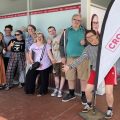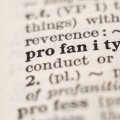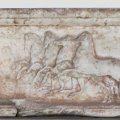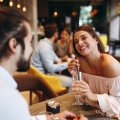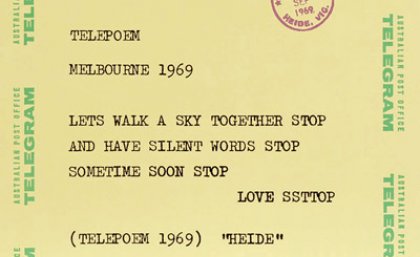
The emergence of visual poetry in Australia in the mid-1960s and its ongoing development will be on display at the UQ Art Museum from 6 July.
Visual poetry or ‘Concrete Poetry’ was an international movement in which artists examined the poetic possibilities of text and language as a means of visual expression in the spirit of the avant-garde.
UQ Art Museum Director Dr Campbell Gray said that art comprised primarily of text was a dramatic challenge to convention in the 1960s, but it was now common for artists to include text in contemporary art.
“The exhibition Born to Concrete: Visual poetry from the collections of Heide Museum of Modern Art and The University of Queensland is a collaborative venture,” he said.
An earlier version of the exhibition was developed by and presented at Heide Museum of Modern Art in Melbourne in 2011.
“Heide has one of the largest collections of Concrete Poetry in Australia and our collection at UQ is also strong," Dr Gray said.
“We have added works by some 15, predominantly Brisbane-based, artists to the original exhibition.
“We saw the potential for UQ to collaborate with Heide because Melbourne and Brisbane share an active involvement in the development of Concrete Poetry within Australia, and that legacy is still felt in both cities.
“Major Concrete Poetry surveys were held in Australia in 1989 – one in Melbourne at what was then called Heide Park & Art Gallery and another curated by Nicholas Zurbrugg at the Museum of Contemporary Art (MOCA) in Brisbane.”
The exhibition focuses on Sweeney Reed, Alan Riddell and Alex Selenitsch, all central figures in the development of Concrete Poetry in Australia.
Also from the Heide collection are works by Scottish artist Ian Hamilton Finlay, Ruth Cowen, Aleks Danko, Jas H. Duke, Peter Murphy, TT.O, Mike Parr and Richard Tipping.
Included from The University of Queensland Art Collection are works by Vernon Ah Kee, Eugene Carchesio, Gordon Hookey, Robert MacPherson, Madonna Staunton and Grant Stevens.
The publication accompanying the exhibition features essays by artist Dr Alex Selenitsch reflecting on the Melbourne scene, and Dr Anne Kirker, who explores the impact of the late Nicholas Zurbrugg, a featured artist and advocate for Concrete Poetry and the Fluxus movement throughout an academic career in Brisbane spanning 17 years (RRP $12.95).
The exhibition will be launched by Heide Museum of Modern Art Director Mr Jason Smith, on Friday 5 July, and will continue until 6 October.
From Brisbane, Born to Concrete: Visual poetry from the collections of Heide Museum of Modern Art and The University of Queensland will travel to the State Library of New South Wales, Sydney, 23 November 2013 to 16 February 2014.
For more information visit: www.artmuseum.uq.edu.au/born-to-concrete
PUBLIC PROGRAMS
Friday 5 July 5pm – 6pm
Before the opening, discover more about the exhibition with artist Alex Selenitsch and curators Katarina Paseta and Michele Helmrich.
Free. All welcome.
RSVP by Thursday, June 27: artmuseum@uq.edu.au, (07) 3365 3046
Friday 5 July 6.45 pm
Sound performance by Eugene Carchesio
MEDIA IMAGES Download images for news and review here
MEDIA INTERVIEWS AND PHOTOGRAPHS:
Curators Katarina Paseta and Michele Helmrich will be available for interview Friday 5 July.
MEDIA: Michele Helmrich, Associate Director (Curatorial), UQ Art Museum, 61 7 3346 8759, 0418 754 983, m.helmrich@uq.edu.au; Gordon Craig, Exhibitions Coordinator, UQ Art Museum, 61 7 3346 8762, g.craig@uq.edu.au, Sebastian Moody (Contact for images – Monday to Thursday only), Digital Communications Officer, UQ Art Museum, 61 7 3346 8761, 0419 789 006, s.moody@uq.edu.au
Exhibition organised by Heide Museum of Modern Art with The University of Queensland.
.jpg)
